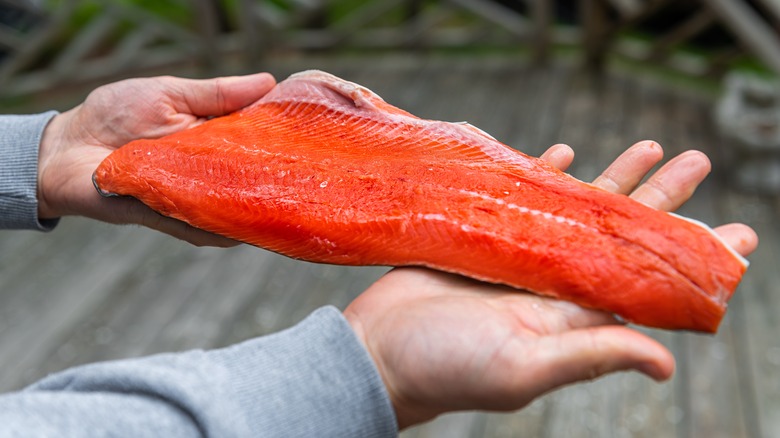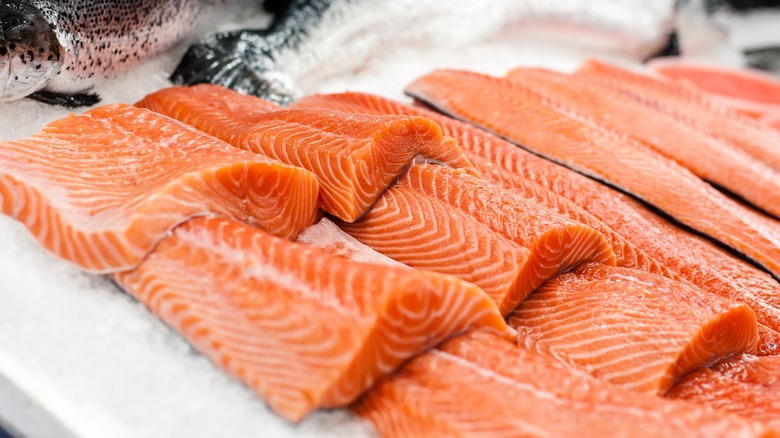Why You Shouldn't Judge Salmon's Quality By Its Color
The darker the salmon, the better its quality — or at least that's what many believe. Research published in the American Journal of Agricultural Economics supports this observation, showing that consumers are more than willing to pay steep prices for salmon with a richer hue. In reality, the connection between color and quality is a bit murkier.
Beyond its color, it's important to consider salmon's nutritional value. Packed with omega-3 fatty acids, high-quality protein, B vitamins, selenium, and antioxidants, salmon offers numerous health benefits. These nutrients can support a healthy heart, brain, and inflammatory response. Given that the Dietary Guidelines for Americans recommend consuming fish like salmon twice a week, and most people don't meet this target, it's important not to let misconceptions about color deter you from including this nutritious fish in your diet. (That is if you enjoy it.) Being an informed shopper means understanding both the health benefits and the true story behind salmon's color.
Where salmon gets its color
The vibrant hues of salmon come from antioxidants called carotenoids, particularly astaxanthin. These compounds are produced by phytoplankton, tiny plants that are eaten by crustaceans like shrimp and krill, which form a significant part of a salmon's diet. This food chain reaction impacts the color of salmon, similar to the way flamingos get their pink coloration from shrimp and how people turn orange if they eat loads of carrots.
In their natural habitats, wild salmon consume a diet rich in these carotenoid-containing critters, but often in differing proportions. This leads to natural variations in the color of salmon flesh. Sockeye salmon, known for their deep color, consume large amounts of these organisms, while Coho and Atlantic salmon, with their lighter hues, have diets with slightly lower amounts of carotenoid-rich food. Farmed salmon are given a specially prepared diet, which often includes synthetic astaxanthin, ensuring that these salmon mimic the specific coloration of their wild counterparts.
How to shop for high-quality salmon
Navigating the seafood counter and the frozen fish aisle can feel a bit daunting. The rich color of a salmon fillet might catch your eye, but it's not a foolproof indicator of quality. Luckily, there are some more reliable ways to ensure you're buying good salmon.
Be mindful of toxins like PCBs in both wild and farmed salmon. Although banned long ago, these pollutants persist in the environment and can accumulate in wild fish. Ask your fishmonger about the salmon's origins and whether it's wild or farmed. Resources like Seafood Watch and the Environmental Defense Fund offer comprehensive guides to help folks select salmon from regions associated with higher-quality fish.
Farmed and fresh salmon both have their places, but so do fresh, frozen, and canned salmon. These are all nutritious options that cater to different budgets and culinary needs. When assessing quality, remember to consider factors beyond color, like country of origin. Understanding these nuances allow you to make informed decisions, ensuring that your salmon selection is based on better markers of quality, rather than just color.


